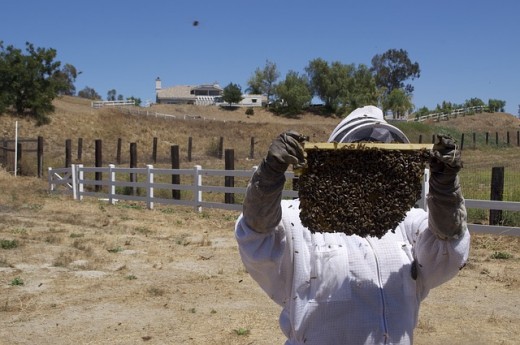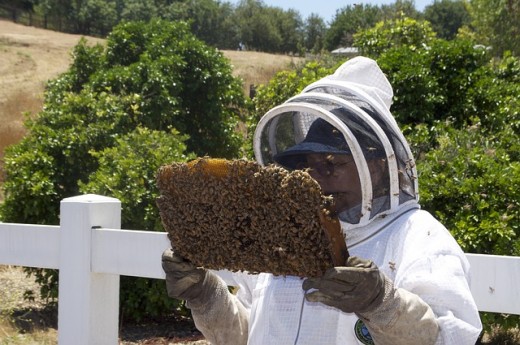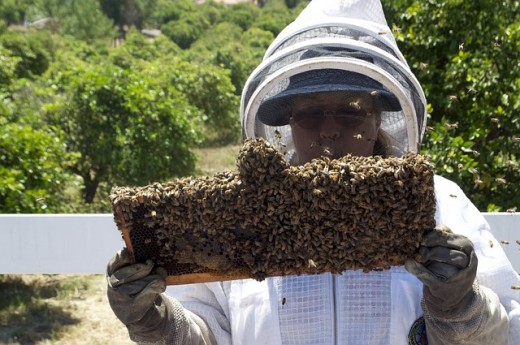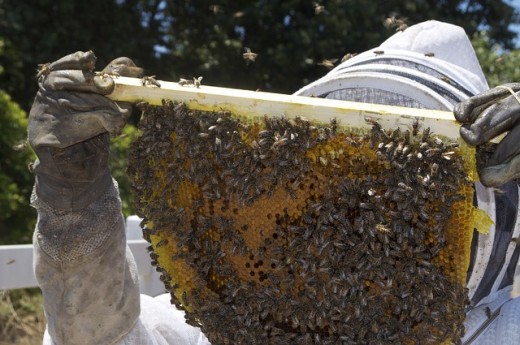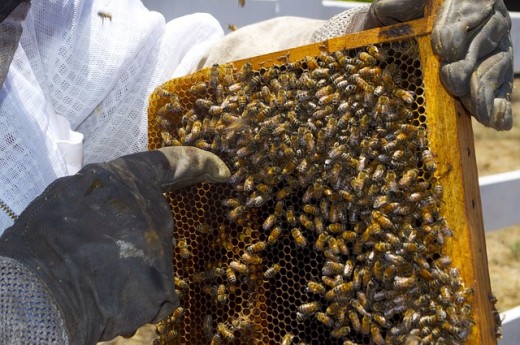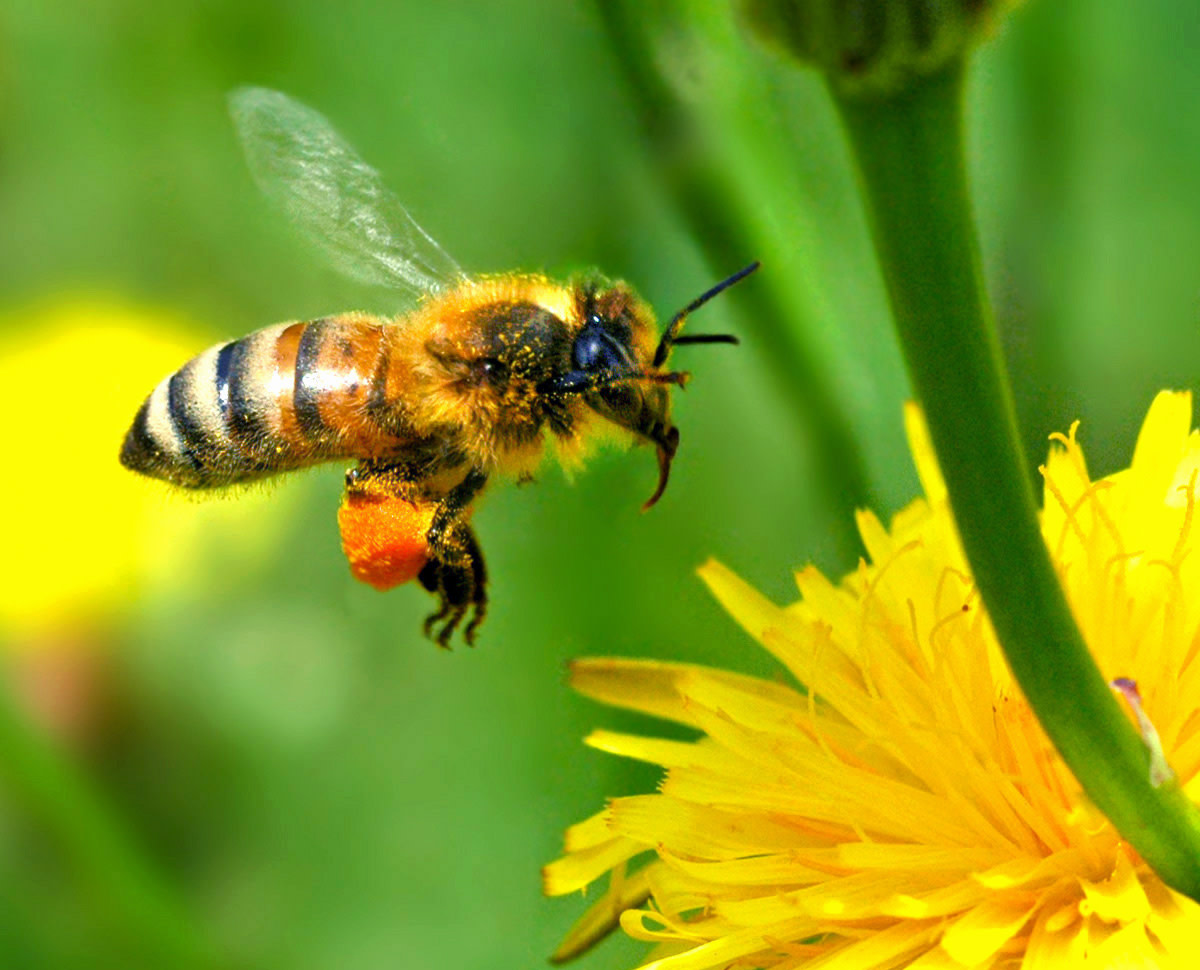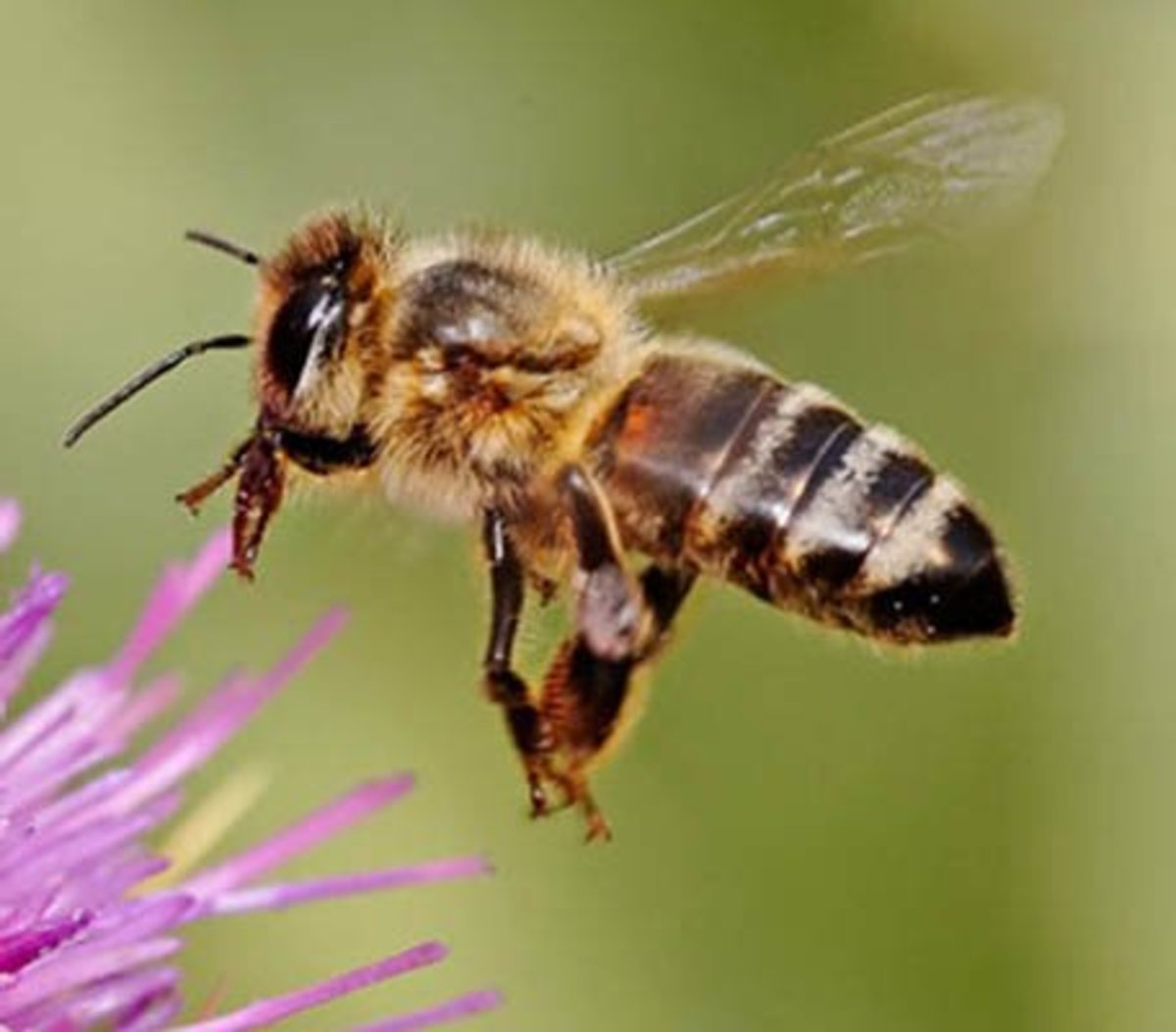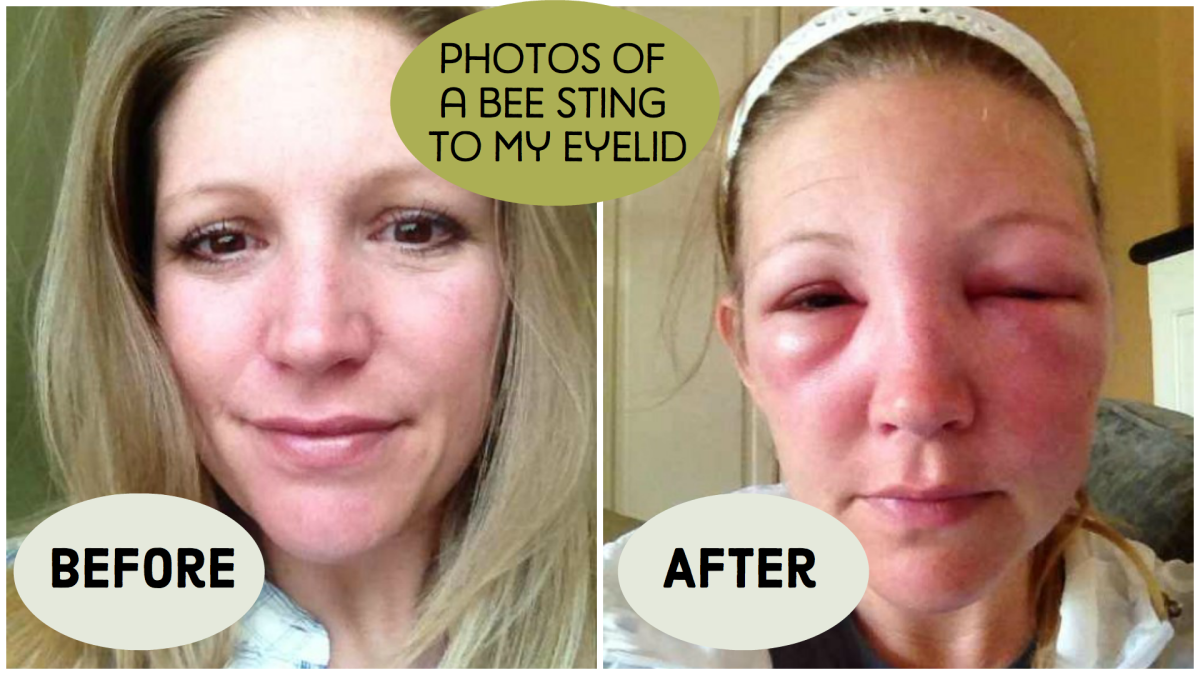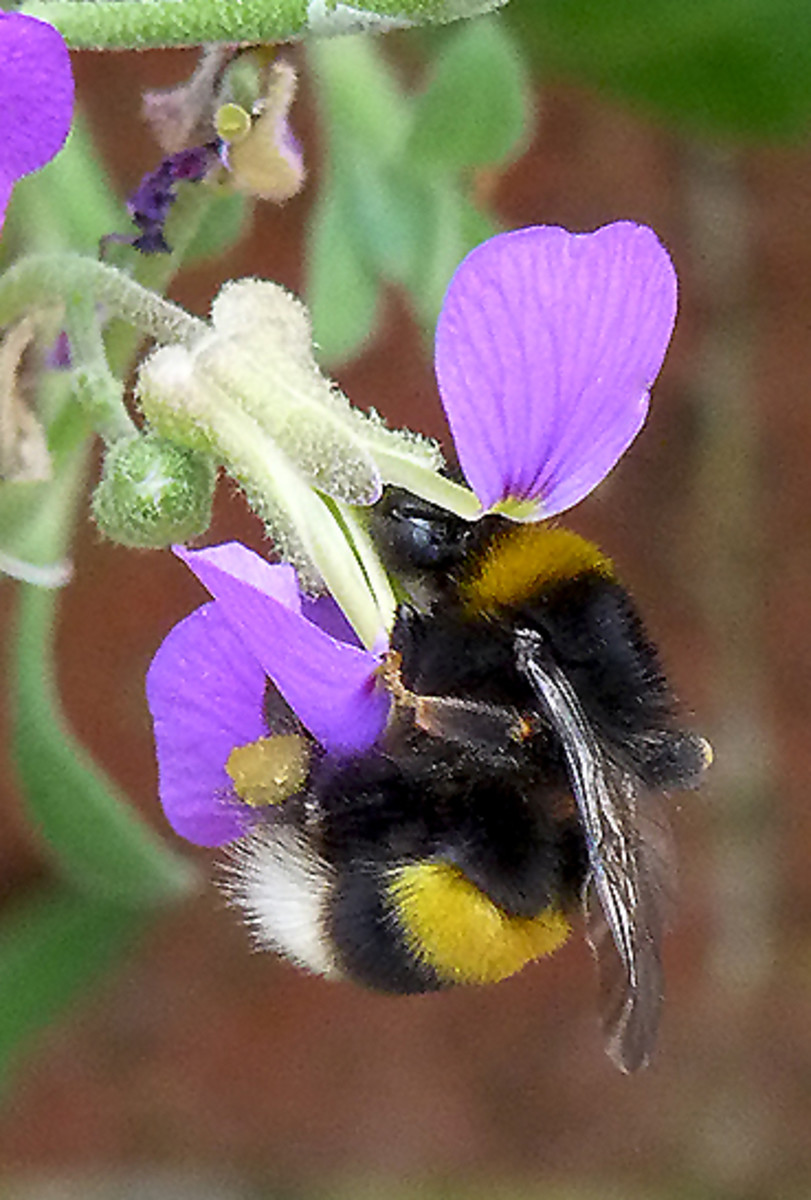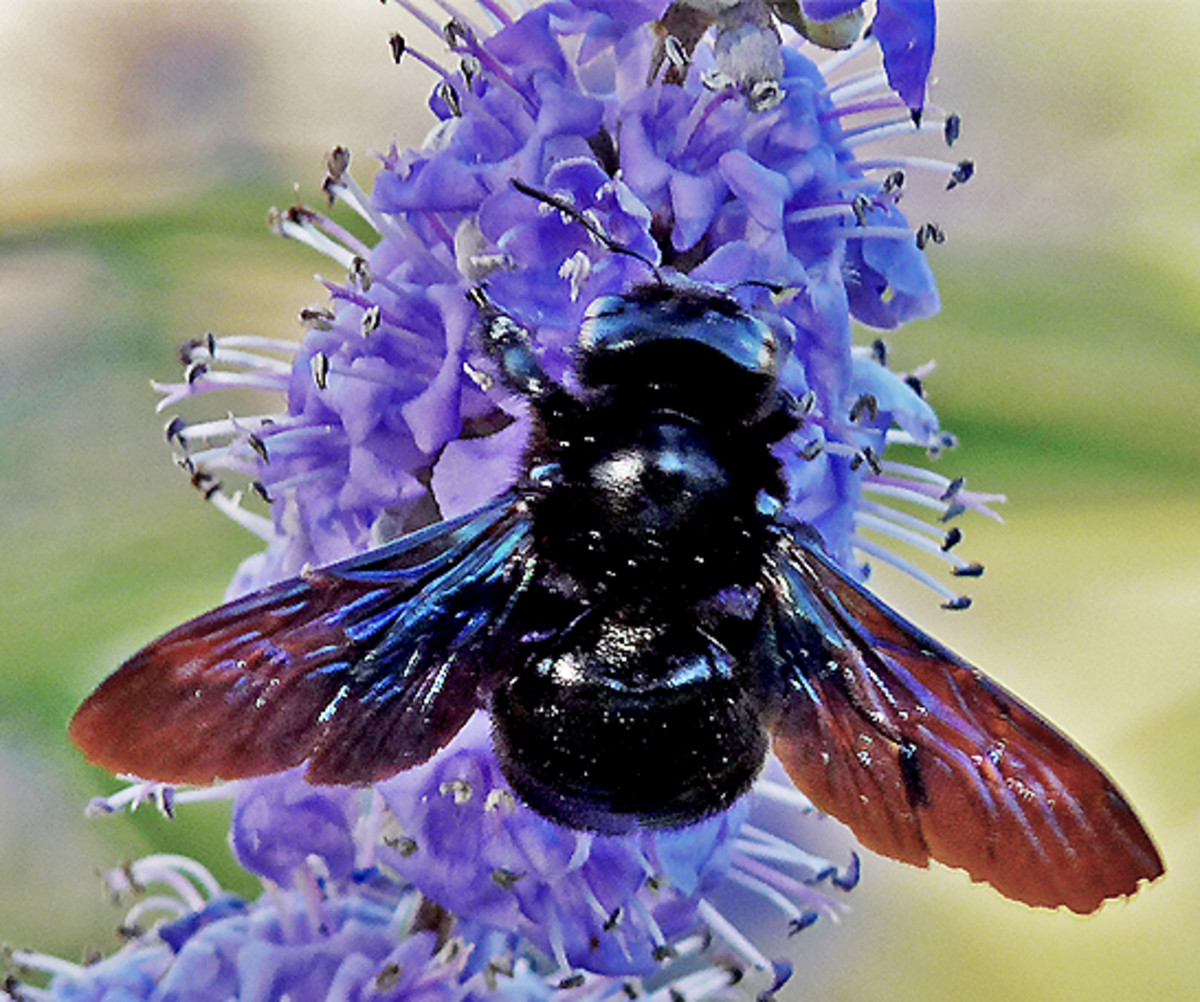The Great Honeybee Crisis: What is Causing Colony Collapse Disorder?
The Great Honeybee Crisis
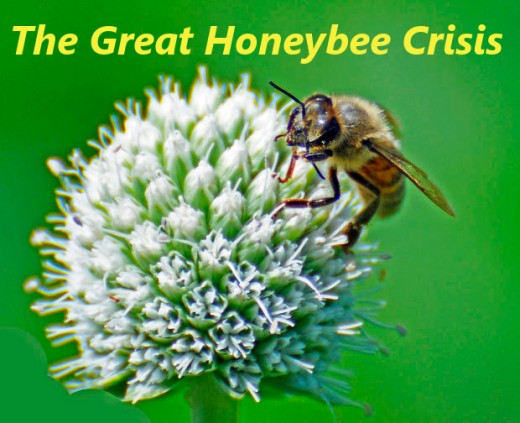
Honeybees Colony Examined By Beekeeper
Click thumbnail to view full-size




Did You Know?
Did you know that all workers in a honeybee colony are females and that any female could potentially be a queen bee?
Royal Jelly is what turns an ordinary bee into the Queen bee. It is fed to all worker bees for the first two days of their life. They select a Queen bee and continue to feed her Royal Jelly until she is 1.5 times larger than the ordinary bees. The Queen bee then lives 40 times longer than the average worker bee on a normal diet.
Royal Jelly is basically chewed up pollen mixed with a secret chemical from a gland in a bee's head.
Honeybee Pollination is Important...if you like to eat
Honeybee pollination is critical to farming in North America. 80% of all insect pollination is credited to the honeybee. Honey bees pollinate an estimated worth of $15 Billion of crops each year. It is estimated that one-third of the foods you eat are directly attributed to the work of honeybees.
Many Crops Depend on Honeybee Pollination
For example, the almond industry heavily relies on honeybees for their crop yield. It requires almost 1.5 million honeybees to sustain California’s almond industry. Current estimates say that is about 60% of North America’s commercially managed honeybees.
Honeybee populations continue to decline each year, and bee experts blame it on Colony Collapse Disorder (CCD).
What is Colony Collapse Disorder?
Colony Collapse Disorder is the term given to the recent astounding 30-70% of colony “die-offs” taking place each year to European honeybee populations, particularly affecting the commercial honeybee industry in North America. Changes in agricultural practices - namely the introduction of new pesticides - are suspected to be one factor for CCD.
Colony Collapse Disorder is characterized by very few adult honeybees present in the hive, but there is a live queen present and young, immature bees present, and honey present. Dead honeybees are not found, but they are just gone. In beehives that experienced CCD, Varroa mites have been found.
Honeybee Pollinating a Flower
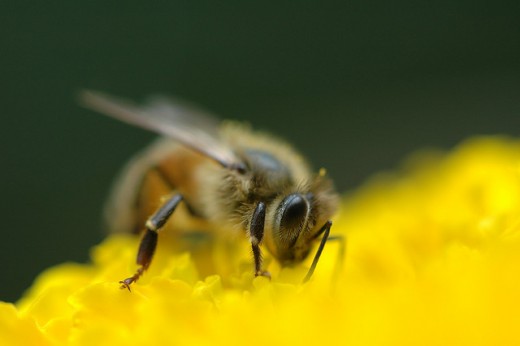
Factors Affecting Colony Collapse Disorder
Four Categories of Problems for Honeybees Contributing to CCD:
- Environment - Various factors including pesticides and changes to the environment in which the honeybee lives.
- Parasites - Varroa mites are the main parasite found in honeybee colonies.
- Management - Commercial honeybees are being transported longer distances, could have less access to proper nutrition, and overcrowding.
- Pathogens - Different viruses and bacteria that can contribute to declining honeybee populations.
Pesticide Spraying in Progress

Neonicotinoid Pesticides
Neonicotinoid pesticides were first developed in the 1990’s, because it appeared to be less toxic to honeybees, created to replace carbamate and organophosphate insecticides.
Scientists admit that in approved doses, neonicotinoid is “sublethal,” meaning only that it does not kill the honeybees.
But what state does it leave them in?
Environmentalists: "The EPA is at fault for Colony Collapse Disorder"
Environmentalists say that the Environmental Protection Agency (EPA) is to blame for declining honeybee populations - because of their lax standards on pesticides approved for farming.
Bayer’s New Pesticide Adversely Affects Honeybees
In 2003, the corporation Bayer received a conditional registration for a new pesticide, called clothianidin. This pesticide is categorized as a neonicotinoid, which is a pesticide that targets the nervous system in insects. Conditional registrations granted by the EPA are a way to quickly get pesticides to commercial use by farmers.
The EPA granted Bayer CropScience a full registration for the pesticide clothianidin in 2010. Honeybees have declined 20-30% each year in the past five years (U.S. Dept. of Agriculture). It hardly seems like a coincidence.
Author's commentary: It is unfortunate that pesticide makers make a "golden bullet" that kill all insects, and have no interest in targeting specific pests, while sparing the important honeybee. It is clear that the pesticide clothianidin is affecting the honeybee population.
If the great honeybee crisis is not solved, we will lose many nutritious food crops from a lack of pollinators.
Colony Collapse Disorder
Bee News
PBS Newshour reports that on Tuesday, February 25, 2014, the U.S. Department of Agriculture announced that it has authorized $3 million in federal assistance to honeybee farmers in the following states: Michigan, Minnesota, North Dakota, South Dakota, and Wisconsin. This is to help combat CCD until scientist can figure out what exactly is causing it.
© 2014 Zack Love

